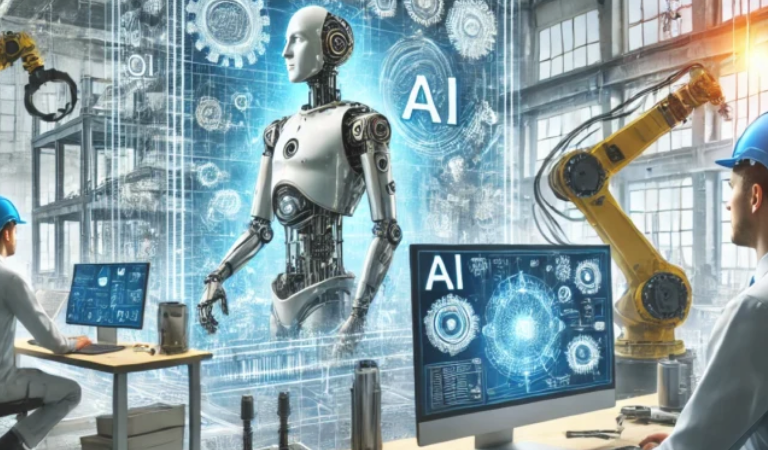Artificial intelligence (AI) and robotics are converging at a rapid pace, redefining industries, enhancing human capabilities, and creating new possibilities. Behind this transformation are several groundbreaking engineering technologies that provide the foundation for smarter, more capable robotic systems. Let’s explore the key engineering advancements that are making AI in robotics not just possible—but revolutionary.
1. Advanced Sensors and Vision Systems
Modern robots rely heavily on data from their environment to make intelligent decisions.
Engineering breakthroughs in sensors and machine vision—including LiDAR, radar, ultrasonic sensors, and high-resolution cameras—enable robots to perceive and interact with the world with remarkable precision.
Technologies like 3D vision, infrared imaging, and hyperspectral sensing are essential for applications ranging from autonomous vehicles to surgical robots.
Key Impact:
- Enhanced object recognition
- Precise spatial awareness
- Improved navigation in complex environments
2. High-Performance Computing (HPC)
AI models require massive computational power, and advancements in high-performance processors, GPUs, TPUs, and edge computing architectures are crucial.
Modern robotics systems can now run sophisticated neural networks in real-time, enabling functions like autonomous decision-making, real-time path planning, and natural language processing on the fly.
Key Impact:
- Real-time AI inference
- Local data processing (reducing reliance on cloud)
- Faster learning cycles for robots
3. 5G and Ultra-Low Latency Networks
Communication is the nervous system of collaborative robotics. 5G technology—offering ultra-fast data transmission and ultra-low latency—has made it possible for robots to seamlessly coordinate with one another and with cloud-based AI systems.
For industrial automation, logistics, healthcare, and smart cities, this networking technology is vital.
Key Impact:
- Remote control and teleoperation
- Swarm robotics coordination
- Enhanced IoT integration for smart factories
4. Soft Robotics and Advanced Materials
Traditional robots were built with rigid materials, limiting their versatility.
Today, soft robotics—driven by advancements in material science, flexible electronics, and biomimicry—allows robots to perform delicate tasks, adapt to irregular environments, and even work safely alongside humans.
Key Impact:
- Safer human-robot interaction
- New possibilities in healthcare (e.g., robotic prosthetics, surgical bots)
- Adaptive grippers for complex manufacturing tasks
5. Machine Learning and Reinforcement Learning Algorithms
While not hardware, advanced AI algorithms are engineered systems in their own right.
Reinforcement learning (RL), supervised learning, and unsupervised learning techniques empower robots to learn from experience, adapt to new scenarios, and even develop new behaviors autonomously.
Key Impact:
- Continuous improvement without reprogramming
- Enhanced autonomy in unfamiliar environments
- Emergence of self-optimizing robots
6. Human-Machine Interfaces (HMI)
The evolution of intuitive human-machine interfaces, including voice commands, gesture recognition, and brain-computer interfaces (BCIs), is bridging the communication gap between humans and robots.
These engineering innovations ensure that non-experts can easily program, control, and interact with AI-powered robots.
Key Impact:
- Broader accessibility to robotics technologies
- More natural and efficient collaboration
- Expansion of robotics into service and entertainment sectors
7. Energy Storage and Power Systems
Finally, advancements in energy storage technologies—such as high-density lithium-ion batteries, solid-state batteries, and wireless charging systems—are providing the long-lasting, reliable power sources that mobile and autonomous robots need.
Key Impact:
- Longer operation times
- Enhanced mobility for drones, rovers, and service bots
- Sustainable robotic systems for remote or off-grid environments
Final Thoughts
The fusion of AI and robotics is fueled by a synergy of engineering technologies across computing, materials, energy, sensing, and communication. As these technologies continue to evolve, the future will bring robots that are not only smarter but more adaptive, collaborative, and seamlessly integrated into every aspect of our lives.
Want to stay ahead in robotics innovation?
Follow the latest trends in AI-driven engineering technologies—and prepare for a world where the impossible becomes the everyday.
Would you also like me to create a short infographic outline or a condensed version you can post on social media? 🚀
Also Read :
